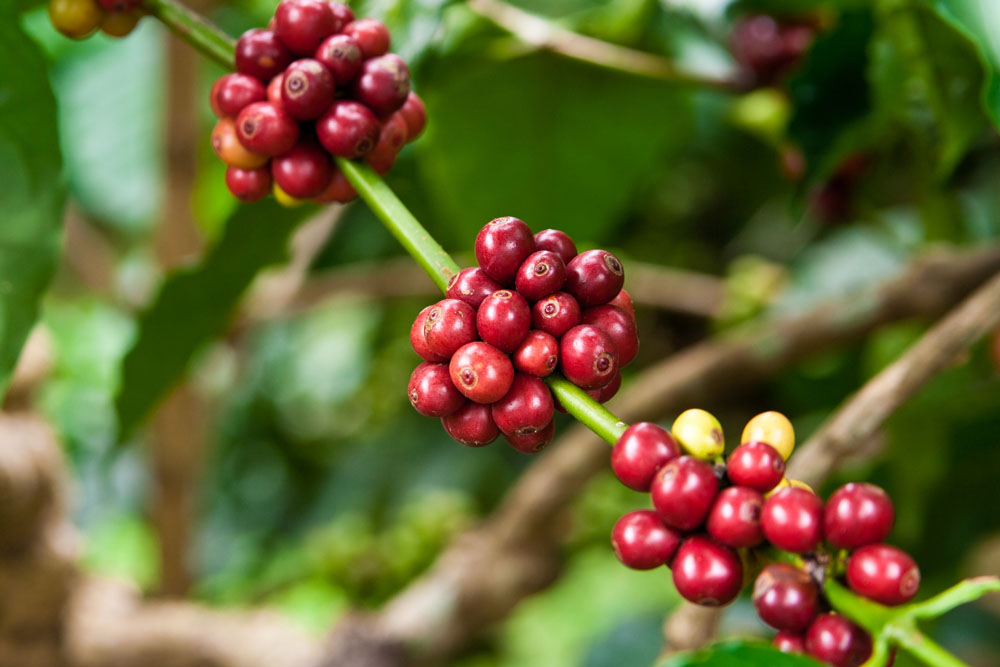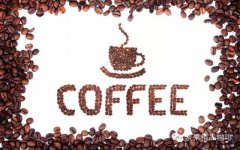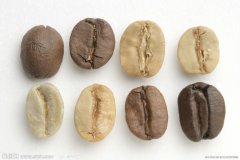In-depth Analysis of Coffee Taste from Chemical Angle
It has been said that adding salt to coffee can neutralize bitterness, which sounds ridiculous, but it has been proved to be effective by science. In 1997, scientists tried to put salt into a bitter chemical solution and compared the bitterness of the solution. It was found that although the concentration of bitter elements in chemical solvents did not change, the chemical solution with salt did not taste so bitter.

The ratio of coffee to water
Adding salt to coffee can only be remedied after it is lost. To really solve the problem that coffee is too bitter, we must go back to its roots. From a chemical point of view, extraction is the real source of coffee flavor. The process of extraction is so sophisticated that only by grasping it correctly can the taste of coffee become better. Among them, the first thing we need to consider is the ratio of coffee to water. In general, the ideal gouache ratio is: 60 grams of coffee / 1 liter of water, equivalent to 1 gram of coffee powder / 16 milliliters of water, or 7 grams of coffee powder / each cup of espresso.
The ratio of coffee to water is extremely important, because the more coffee, the more bitter elements are extracted. Similarly, if the water is in contact with the coffee for too long, the content of bitter elements in the coffee will increase, while if there is too much water, the coffee will be too light and thin.
Brewing time is the second problem we need to consider. We can divide the extraction process of coffee into three steps. First, the acids in coffee, that is, chemical components with fruit aroma, will be extracted first. Then comes the earthy and caramel-flavored substances, and finally the bitter elements in the coffee. Therefore, if the brewing time is very short, the content of the first kind of fruit-flavored substances in the coffee will be higher; conversely, if the brewing time is long, the content of bitter elements in the coffee will increase, accompanied by astringency.
The perfect extraction should be between the two. Of course, the ideal extraction time of different brewing methods is different. For espresso, the contact time between coffee and water should be between 20-30 seconds, while for drip coffee, the brewing time should be between 2-4 minutes.
Temperature and bitterness
Water temperature can also affect the bitterness of coffee. The ideal water temperature for brewing coffee should be between 91 and 96 ℃. If the temperature is too high, the coffee will be charred and the astringency will be stronger; if the temperature is too low, the extraction of the coffee will not be enough. Of course, there are also cases where cold brewing coffee is extracted with extremely cold water, so the bitterness of the coffee is very mild and soft, but correspondingly, this brewing method takes a very long time.
The type and degree of grinding of coffee
Even with superb brewing skills, if the quality of the coffee itself is poor, the taste of the coffee is not much better. Generally speaking, there are two kinds of coffee: Arabica coffee and Robusta coffee. Among them, Arabica coffee is of better quality and taste. Robusta coffee contains more phenols, pyrrole, sulfur and other substances, so the taste of coffee is more astringent and rough.
In addition, the degree of coffee grinding will also affect the bitterness of coffee. If the coffee powder is too coarse, the coffee will not be extracted enough, resulting in the coffee taste too light; if too fine, the extraction of soluble substances in the coffee is too high, the coffee taste will be more bitter. In order to make the perfect coffee, you must find the best balance between the two.
Important Notice :
前街咖啡 FrontStreet Coffee has moved to new addredd:
FrontStreet Coffee Address: 315,Donghua East Road,GuangZhou
Tel:020 38364473
- Prev

Semi-hot air roasting coffee roaster raw bean manufacturer coffee roasting mode coffee studio
Semi-hot air roasting is currently the most popular and best-controlled way of roasting coffee. It can make up for the shortcomings of the direct-fire roaster, improve safety, and show the aroma and flavor of coffee. Many people say that with the change of season or weather, the results of baking will be a little different. This sentence does not seem to be suitable for semi-hot air baking. Because
- Next

Coffee roaster training and terminology how can coffee roasting produce oil coffee beans roast degree
After the end of the endothermic reaction stage and the first explosion, the heat-proof reaction is carried out immediately. The sound produced by the expansion effect produced by the preheating of raw beans during the first burst, the sound and time of bursting will vary with the variety, density and vitality of the endothermic reaction stage. Under the condition of high temperature baking, direct fire baking will occur 1 explosion in 7 minutes, while semi-hot air.
Related
- Beginners will see the "Coffee pull flower" guide!
- What is the difference between ice blog purified milk and ordinary milk coffee?
- Why is the Philippines the largest producer of crops in Liberia?
- For coffee extraction, should the fine powder be retained?
- How does extracted espresso fill pressed powder? How much strength does it take to press the powder?
- How to make jasmine cold extract coffee? Is the jasmine + latte good?
- Will this little toy really make the coffee taste better? How does Lily Drip affect coffee extraction?
- Will the action of slapping the filter cup also affect coffee extraction?
- What's the difference between powder-to-water ratio and powder-to-liquid ratio?
- What is the Ethiopian local species? What does it have to do with Heirloom native species?

